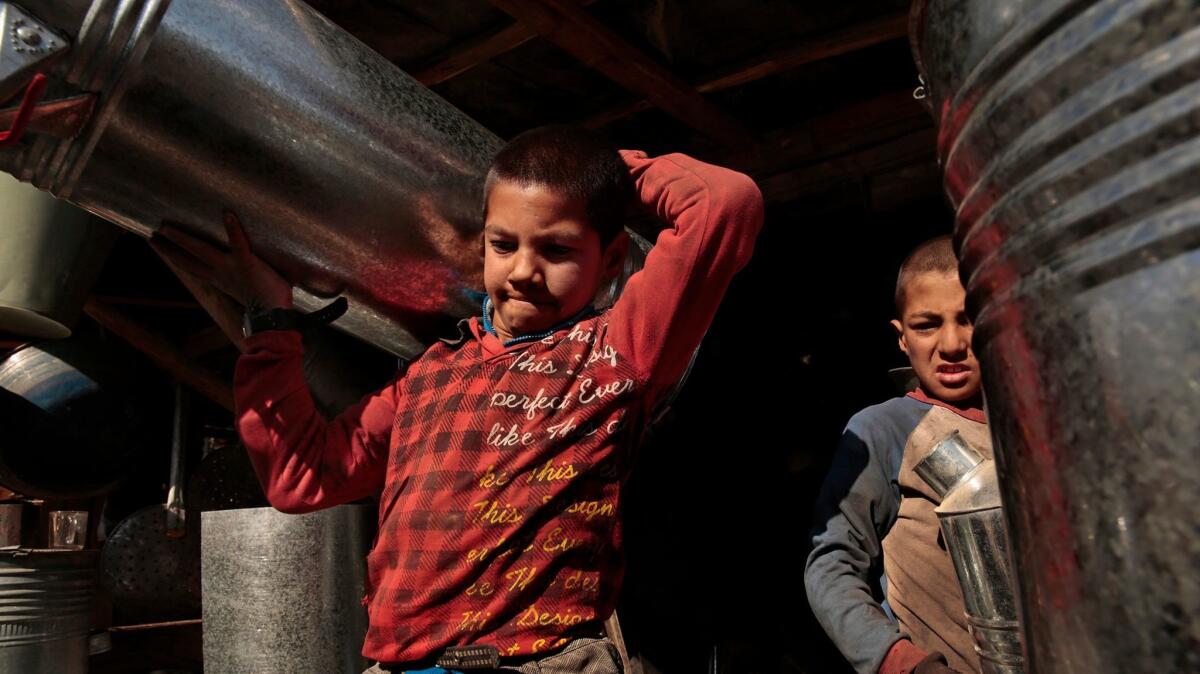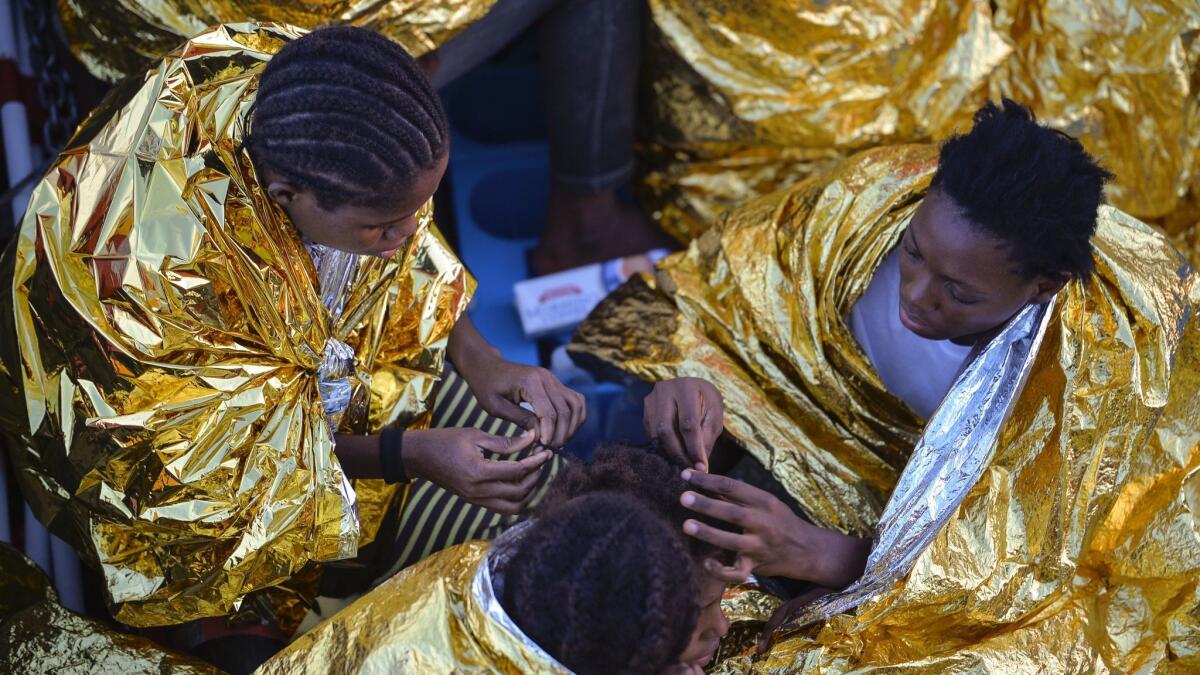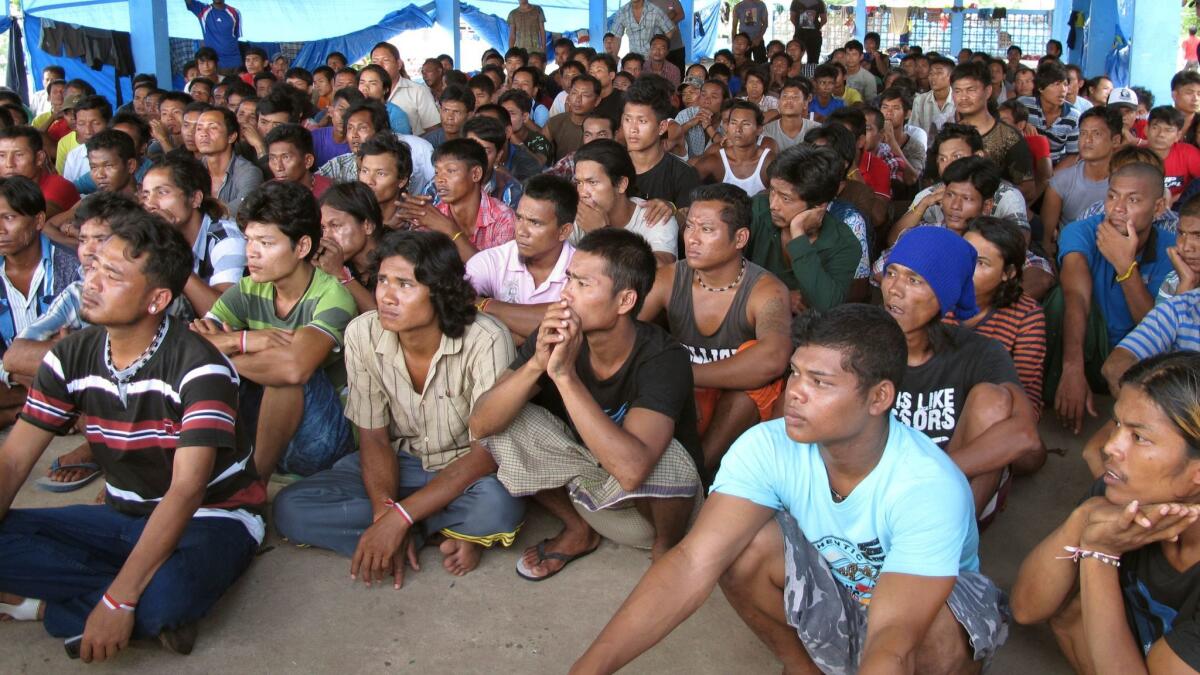Slavery is alive and well: 89 million have been in some form of bondage in the last five years, report says

A report published Tuesday highlighting the scourge of modern day slavery paints a stark picture. (Sept. 19, 2017) (Sign up for our free video newsletter here http://bit.ly/2n6VKPR)
- Share via
A report published Tuesday highlighting the scourge of modern day slavery paints a stark picture.
“We now have the largest number of slaves on Earth than we’ve had in human history,” said Andrew Forrest, founder of the Walk Free Foundation, an organization working to end contemporary slavery and human trafficking which co-authored “Global Estimates of Modern Slavery” with the International Labor Organization, or ILO.
“But we also feel equally as confident that we have the weapons now, we have the communications skills, we have the interest to raise it to public attention,” Forrest said. “As soon as the public becomes aware that slavery exists among them they can ask the question when they’re at the teller, or when they’re at the shops, or when they’re buying clothes, how can I be sure that this clothing, this seafood, this product wasn’t made by slaves? And with that question frees a slave.”
The report demonstrates the challenges of achieving the United Nations’ goal of combating forced labor, modern slavery and human trafficking in all its forms by 2025. But it’s not due to lack of trying, researchers said.
“The thing about criminals is that they are incredibly inventive,” said Fiona David, the Walk Free Foundation’s executive director of global research. “So as one form of slavery becomes illegal or becomes very difficult to perpetrate, criminals really look for the weakest link and they find new ways to exploit vulnerability.”
The report, supplemented by accompanying analysis by the ILO, examines different forms of forced labor, which it said occurred in every region of the world in 2016. The problem was the most prevalent in Africa, followed by Asia, the Pacific, Europe and Central Asia, according to the report, which acknowledged that the results should be interpreted with caution due to the dearth of data from some areas, such as the Americas and Arab states.
According to the report, which also spotlights forced marriage, “no single source provides suitable and reliable data for all forms of modern slavery.”
The core statistics were based on national surveys involving interviews with more than 71,000 respondents across 48 countries, researchers said. It was supplemented with data from the International Organization for Migration that also partnered to produce the report, according to David.
The enslaved included people threatened or coerced into roles as domestic workers, on construction sites and farms, in clandestine factories and in the sex trade.
Here’s a look at some of the disturbing numbers, which the report warned were conservative estimates due to the limitations of the data.
151.6 million
The number of children 5 to 17 years old who are in forced labor, according to International Labor Organization findings. By international standards, child labor is defined as “work that is hazardous, demands too many hours, or is performed by children who are too young,” the agency said.

89 million
The number of people who have experienced some form of slavery in the last five years. The average length of time victims were forced to work varied from a few days to five years. And one in four victims of modern slavery were children, the report found.
“Slavery is a crime of opportunity,” said Forrest, who is also chair of the Fortescue Metals Group, an Australian iron ore company. “If you’re in Bahrain and you’re enslaving an African girl … because you think you’re a higher species of human, you’re in fact nothing more than the modern day slaver who used to ship Africans out of Africa to Europe and North America for blood money.”
40.3 million
The estimated number of people who were victims of slavery in 2016. Of these, 25.9 million were men, women and children who were forced to work against their will last year.
“Today, women and girls are predominantly being subjected to forced labor in domestic work and the sex industry, whereas men and boys are being subjected to forced labor in construction, in manufacturing and in fishing,” said David, the researcher. “And these are industries quite thoroughly regulated.”
Meanwhile, 15.4 million people were confined to a marriage to which they had not consented. Most the enslaved are women and girls, who comprise 71% of the overall total of enslaved people.
“People need to be aware that if they enslave a domestic servant, if they enslave a child, if they enslave a bonded laborer, they are nothing greater than the worst individuals who propagated slavery in the 18th century,” Forrest said

16 million
The number of people who were in forced labor in the private economy in 2016. Half of these men and women were in so-called “debt bondage,” in which personal debt is paid through forced labor, according to the report.
5.7 million
The number of children who were forced to marry. Among the child victims, 44% were forced to marry before they were 15 years old.
“Child marriage and forced marriage is absolutely the domain of government and we should force governments to put an end to the practice, which absolutely meets every definition of slavery,” Forrest said.
4.1 million
The average number of people in “state-imposed forced labor” last year. These included citizens recruited by government authorities to participate in agriculture or construction work for economic development, and young military conscripts.

3.8 million
The number of adults who endured forced sexual exploitation. In addition, 1 million children were victims of commercial sexual exploitation. The vast majority of those subjugated were women and girls.
So how to end this modern-day scourge?
Ridding the world of this blight would require “a multifaceted a response,” the report said, with solutions targeting economic, social, cultural, and legal factors.
“There can be no one-size-fits-all solution,” the report said.
Companies, governmental agencies and consumers must collaborate and take the lead, Forrest said.
“I think that there’s real hope in the world that slavery can come to an end with the united action of business and government,” Forrest said. “That is absolutely the solution.”
ALSO:
Ivanka Trump leads U.S. condemnation of China and other countries for human trafficking
'Ruthless human smugglers' blamed for deaths of 9 people left in a truck in 100-degree Texas heat
Dozens of women and children rescued in human-trafficking sweep in California that nets 474 arrests
Sign up for Essential California
The most important California stories and recommendations in your inbox every morning.
You may occasionally receive promotional content from the Los Angeles Times.








